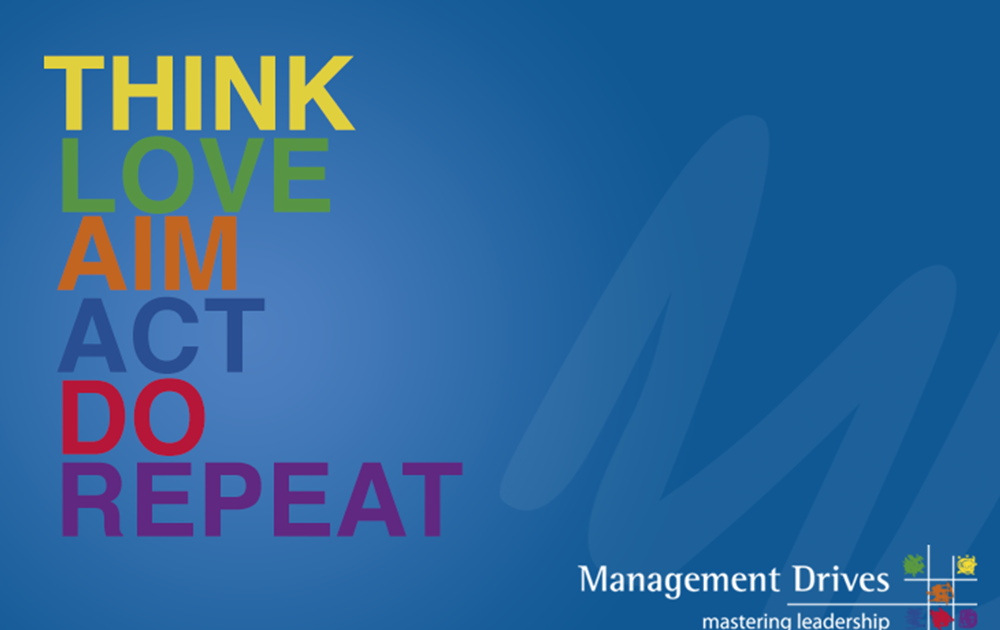For many years I have been intrigued by all kinds of personality “tests” or surveys that should make us work better together or explain who we are based on the behavior we display. Although it gave interesting insights, it always prompted the question; “Why do we demonstrate certain behavior”. I believe I have finally found an answer that does not only give great insights, but can also be used for personal growth.
Everyone will recognize them, the moments of happiness when you just worked on something energizing, or opposite, the tasks and conversations that just drained your energy to a low point. Often, we consider the task, conversation or the accomplishment the reason for how we feel. But besides these moments there could be periods in our career that for a longer time we ride on that high, bursting of energy, or we feel our energy levels decrease a little every day. Pinpointing it to one event or one reason is getting more and more difficult.
This is where it becomes important to know what drives you as an individual in the workplace. How does your mind work and what gives you energy and what makes you lose energy?
Don Beck and Chris Cowan published a book called Spiral Dynamics; Mastering Values, Leadership and Change based on the Emergent Cyclic Levels of Existence (ECLET) theory of psychologist Clare W. Graves.Graves believed that man’s nature is not a set thing, that its ever emergent, that it’s an open and not a closed system. Influences of biology, the psyche, social environment and systems around will interact with neuronal systems and will determine how you look at world. This determines which logic you use to make sense of the world and which behaviors you demonstrate. Graves presented these as emergent stages, vertically aligned.
Although I understand why there is a growth in the spiral of Graves, I believe placing it as emerging stages implies judgement of one being better than the other, while all stages have their own powers and strengths. In my opinion this can hinder an initial conversation with a person or a team when discussing what drives them. Discussing this with some people in my network led me to a company called Management Drives, who have used the basics of the theory of Graves to develop their own tool, free of judgement to coach individuals and teams on utilizing their drives, and develop their potentials strengths to create more efficiency and energy.
The 6 different drives that exists are typified by a color. Below there is a short outline of some traits of each drive, but many more behaviors and connections can be made and offer interesting insights in individuals, teams and organisations.
Yellow is the drive that searches for the truth and really wants to understand. The world is seen as a complex puzzle, and their reasoning is that people should act based on their understanding of things. Yellow is the rational drive of someone who likes to think from big to small. First they will analyze the main aspect, then the details, if they are interesting enough. For yellow, today is just a step towards the future. A vision of the future is created, then it is decided how this vision could be realized.
Green is a drive that places a lot of value on emotion. A green person puts others, rather than himself, on center stage. According to green logic, if everyone did this, society would be more harmonious. Green communicates extensively and with a lot of emotion. As a result, communication is often identified as the cause and the solution of many problems.
Orange is the drive that wants to achieve results and seeks progress. The world is seen as a place full of opportunities and possibilities. Objectives and results are at the center of orange’s thoughts. Appreciation and receiving applause from others for one’s accomplishments is important.
Blue is the drive that wants to create clarity and certainty. Blue is convinced that it is to everyone’s advantage if everything is thoroughly organized and regulated. “If you do something, do it right”, and “you must finish what you have started” are typical blue statements. Blue is a rational drive that wants to understand cause and effect and act responsibly. To blue, concrete reality is an important starting point.
Red is the drive that is naturally focused on power and obtaining and maintaining one’s own domain. The essence of red lies in the conviction that strength and speed determine their position. Perhaps the word fearless is the best way to describe red: courage, a pioneering spirit and impulsiveness characterizes this drive.
Purple is the drive that looks for a connection between people and their roots: family, tradition and native soil. It is not just about creating a sense of home, but also about the traditions and rituals that reinforce that feeling. Purple serves the big picture. Modesty, not ego, is what purple is all about, and what connects people (family, the business, the team) is paramount.

In an excellent organization you would want to ensure all these drives get recognized, you might know them for other words that can be linked to these drives.
If you are interested to learn more about these drives and what they mean to you as an individual, or what they mean for your team, please feel free to contact us to discuss where we can help you.











